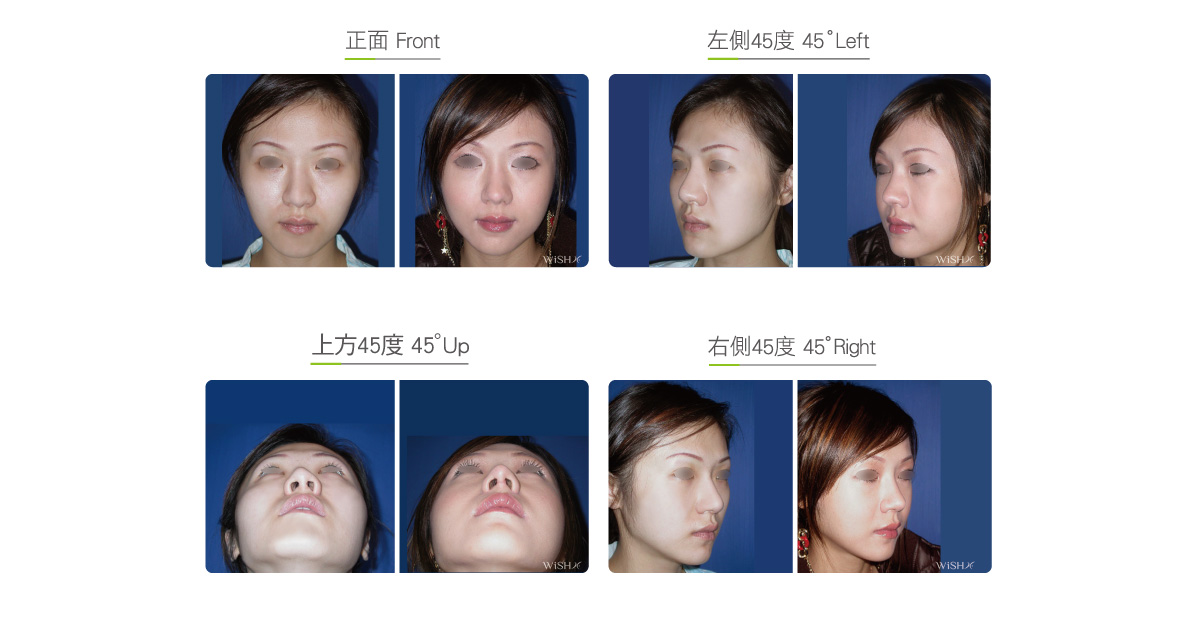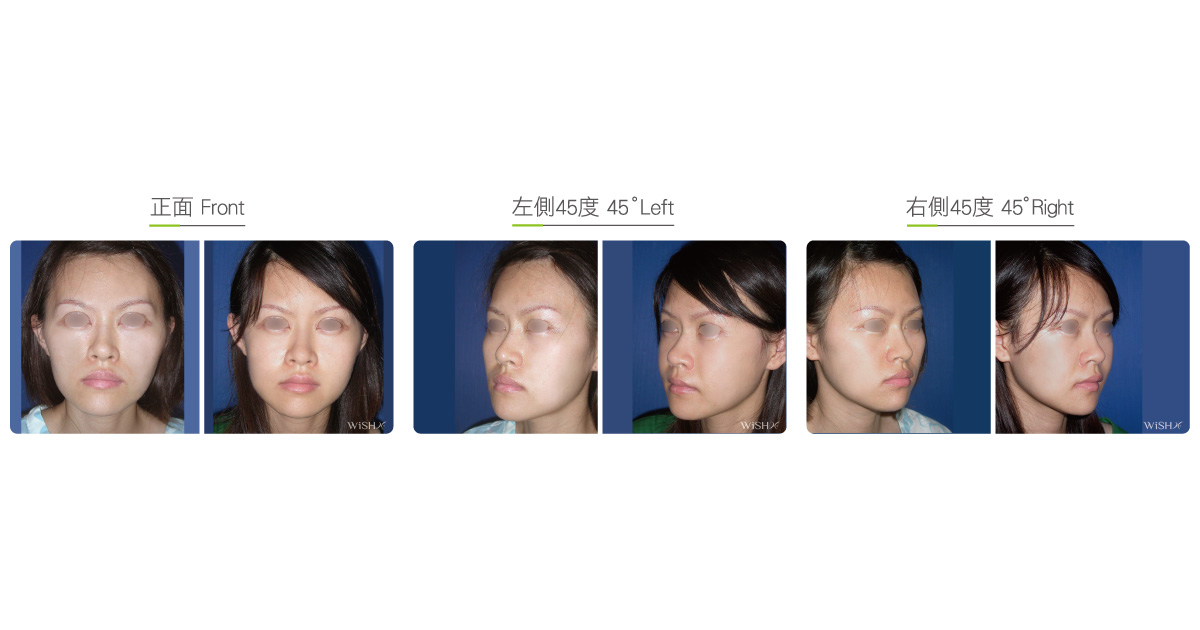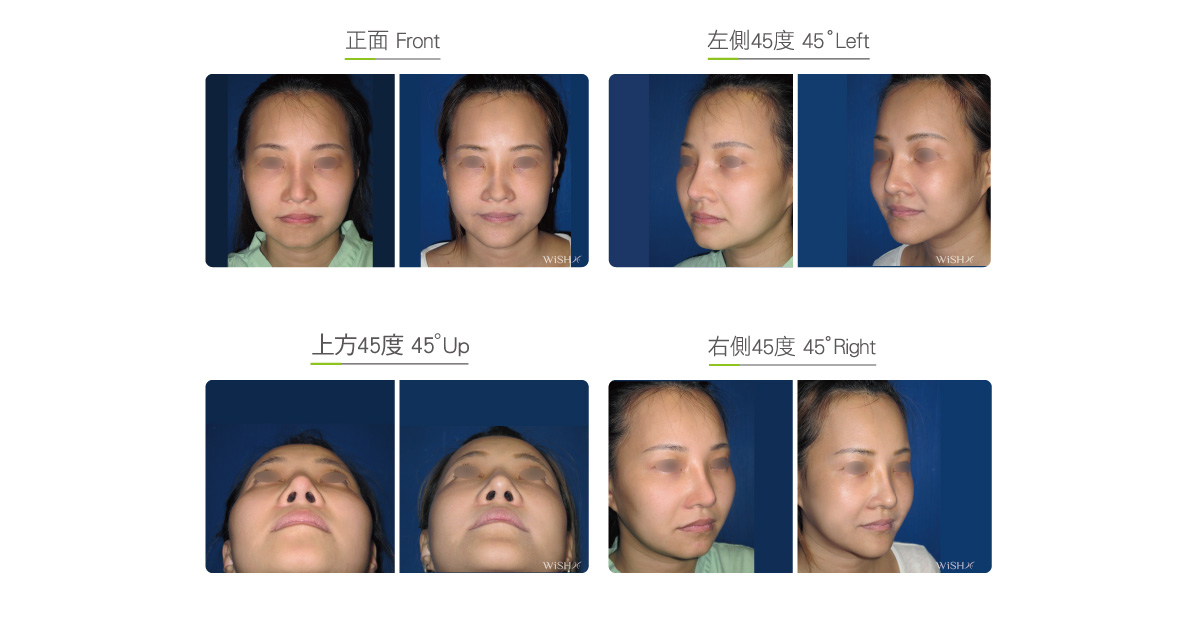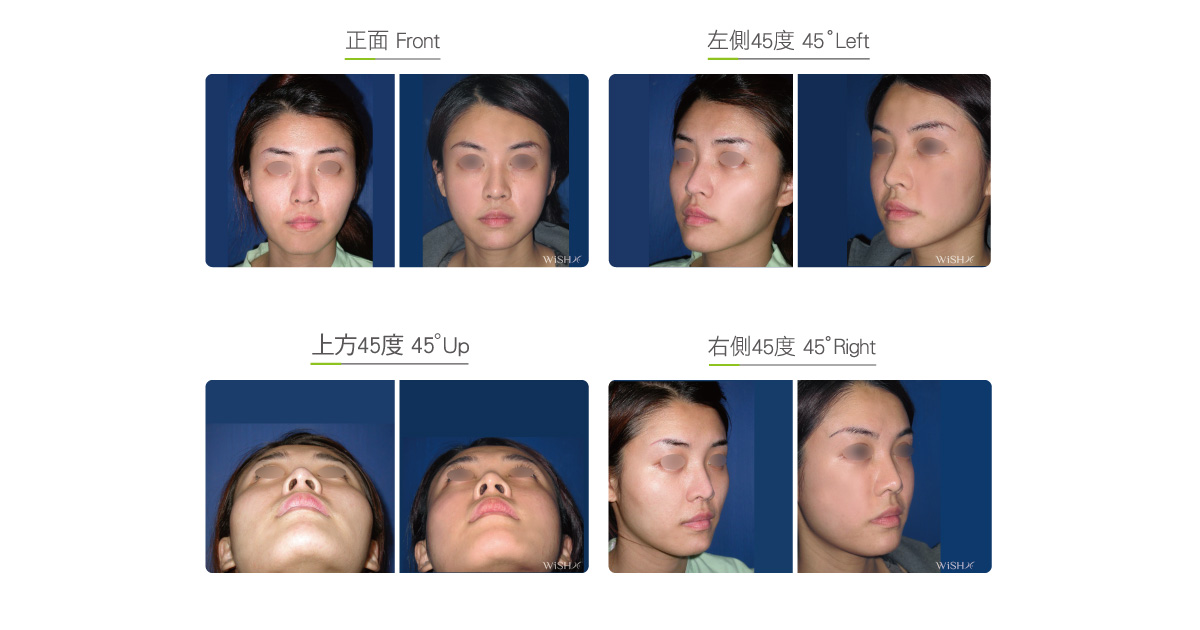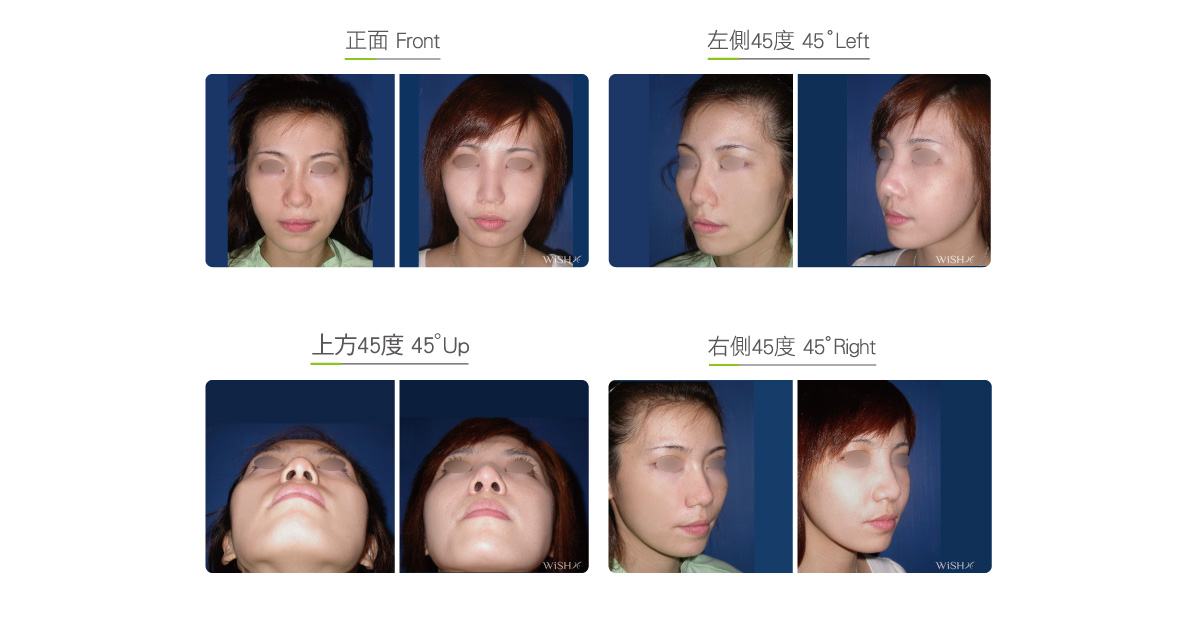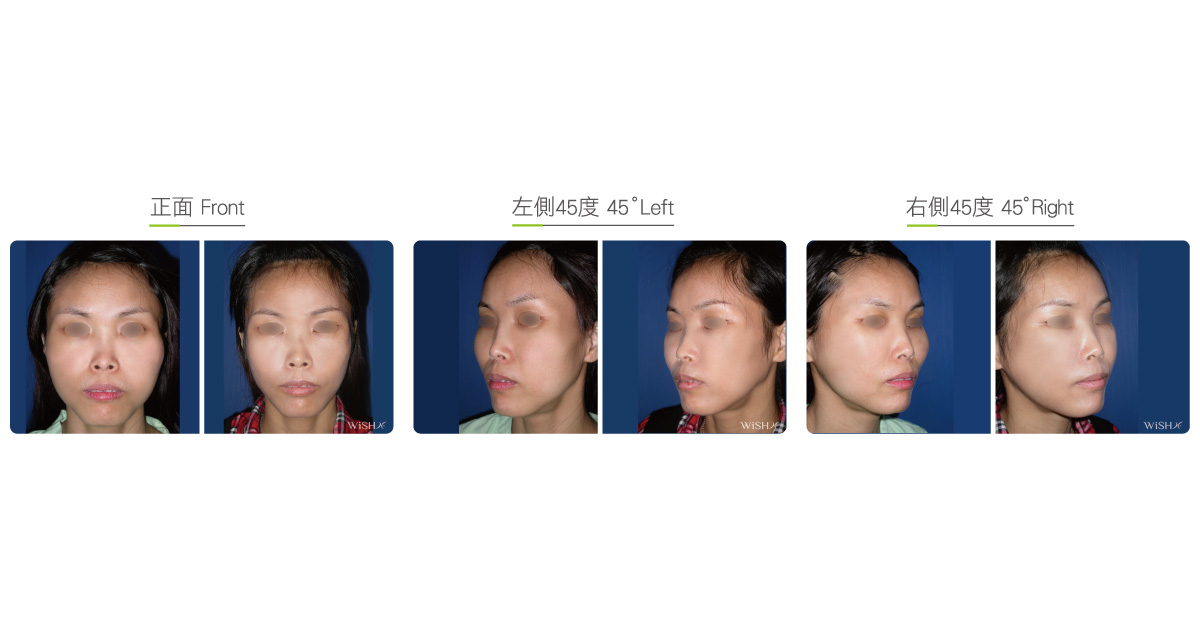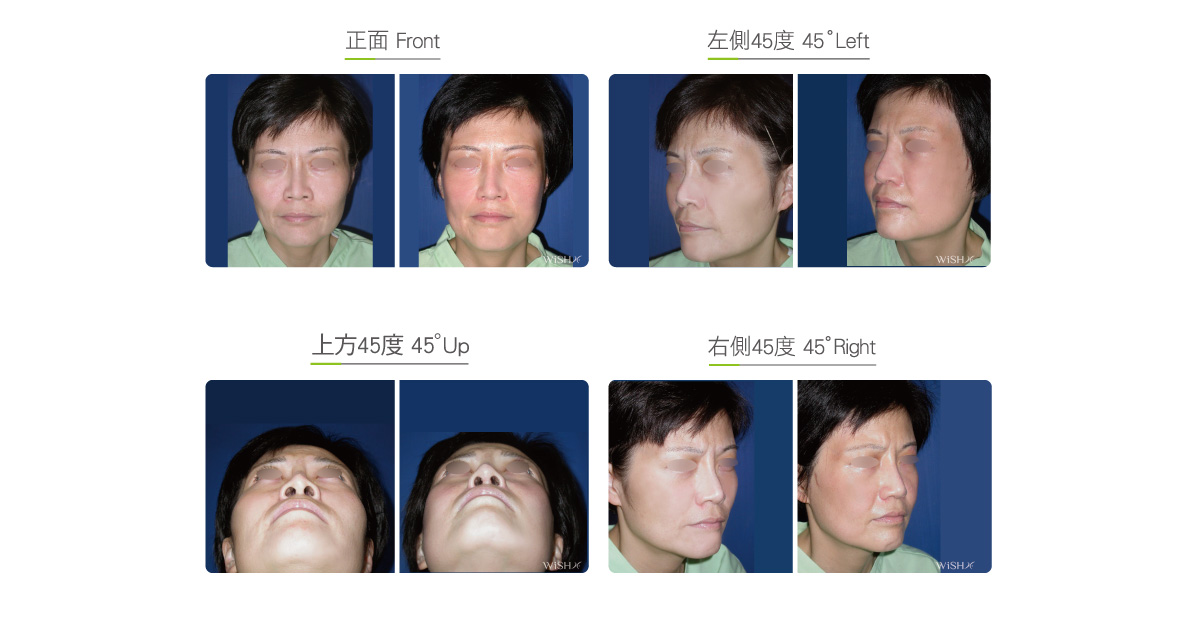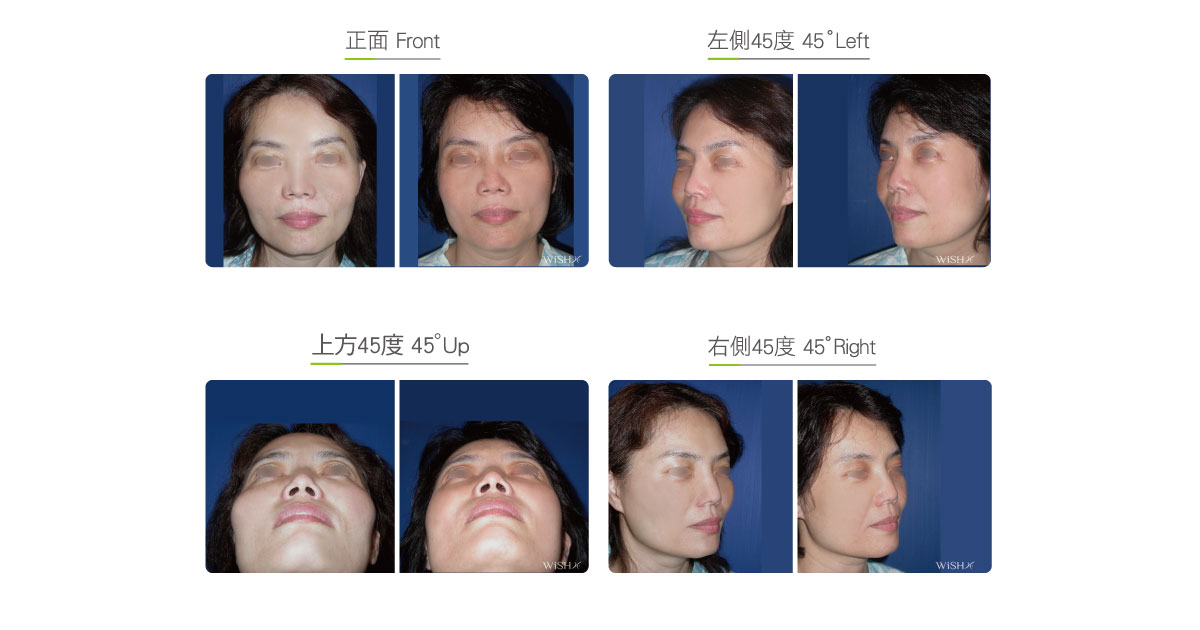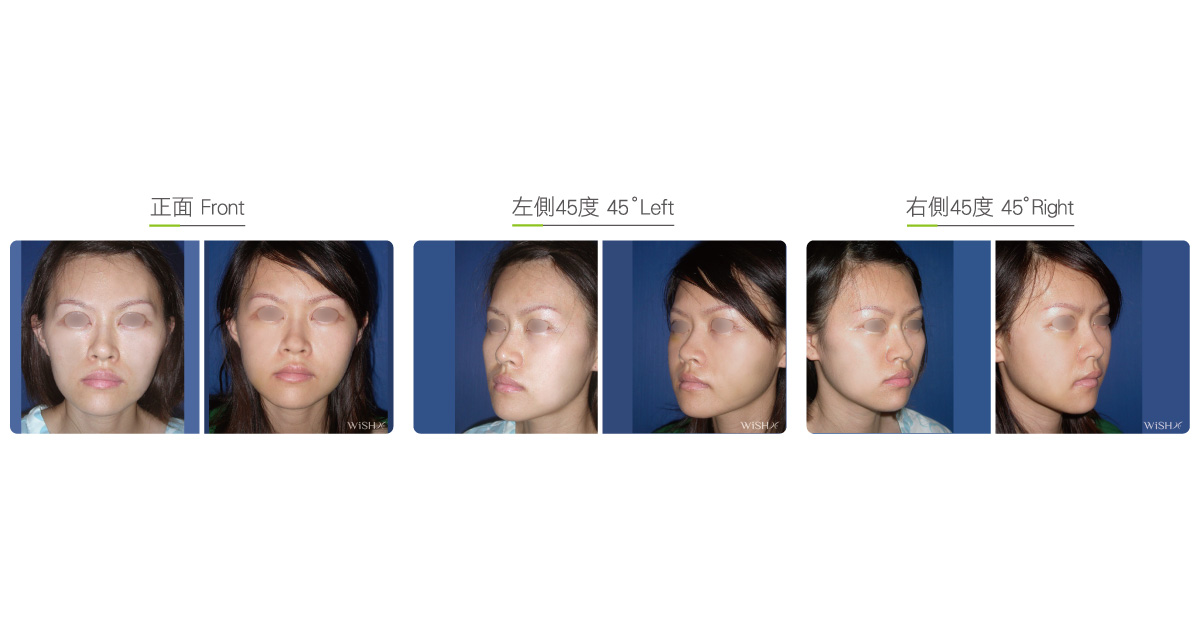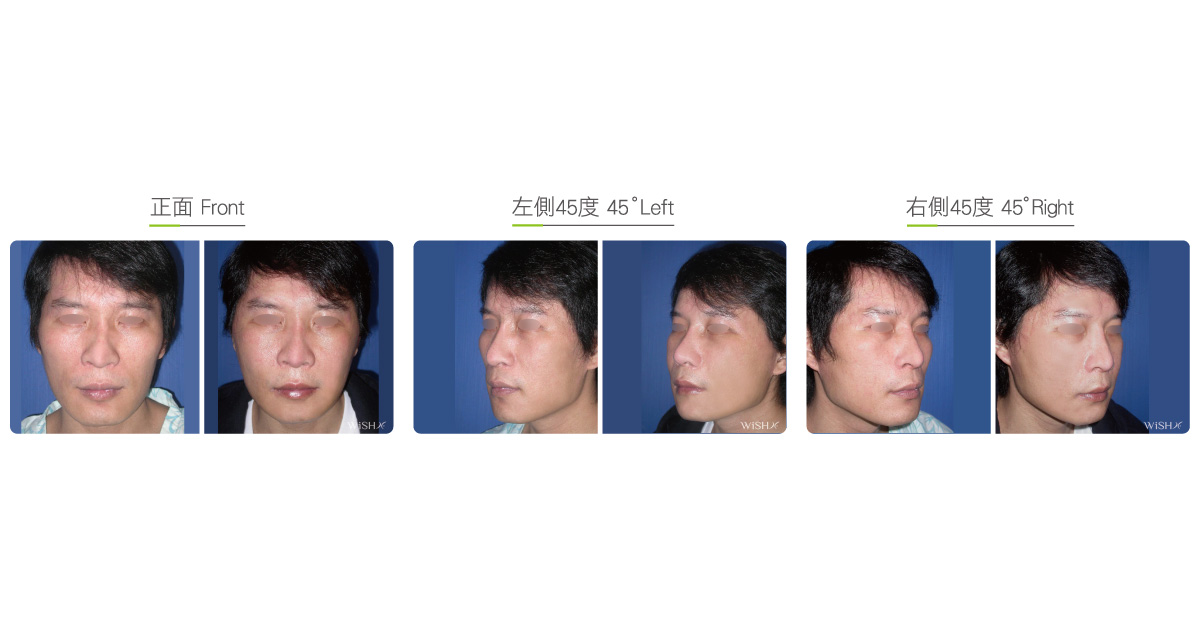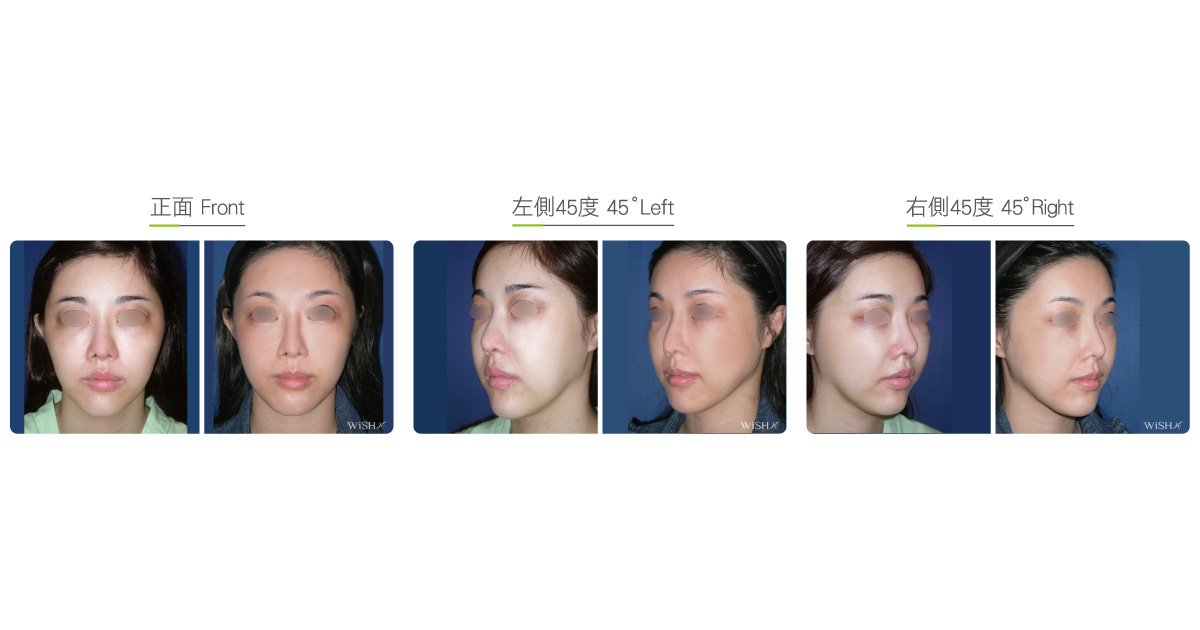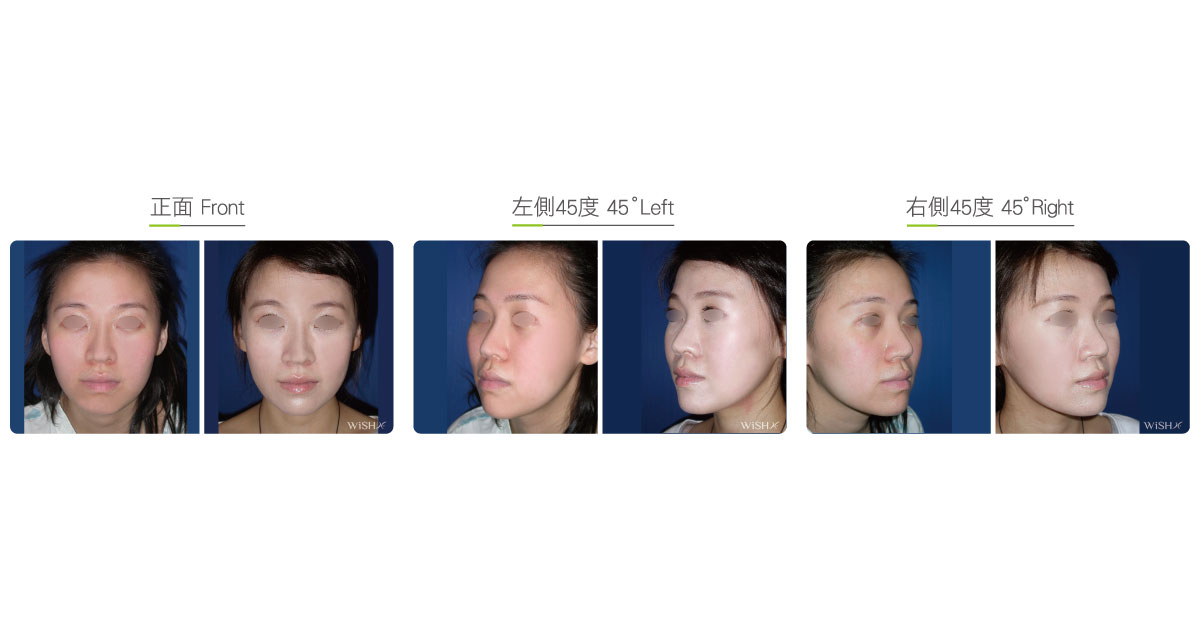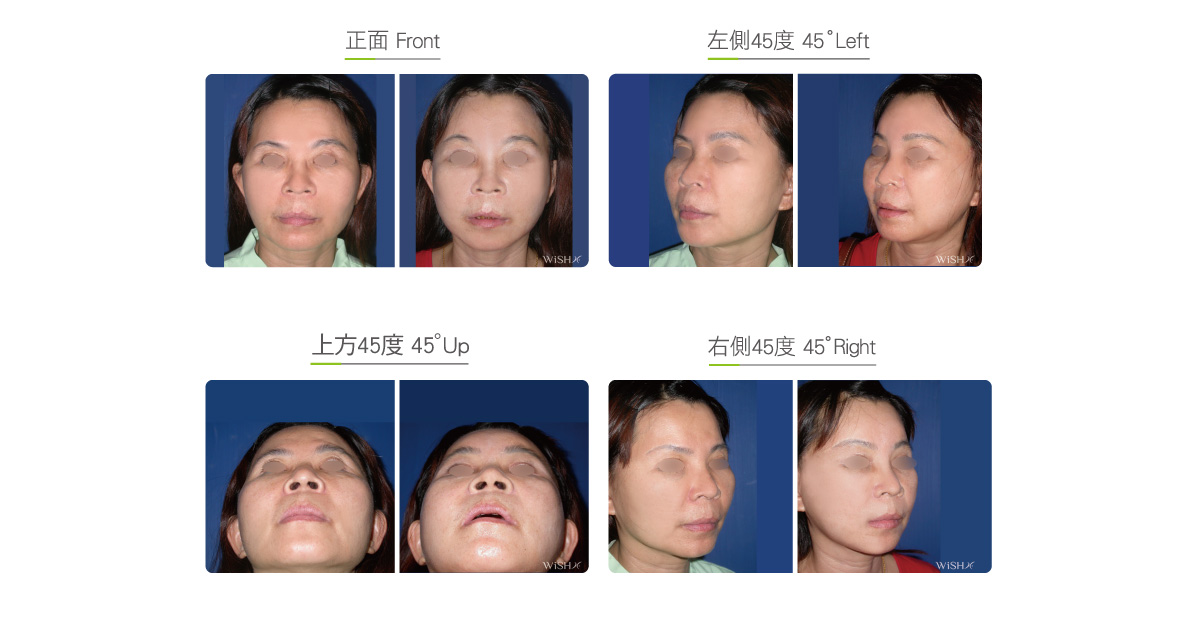Zygomatic Body with Arch Reduction
This procedure is similar to zygomatic arch reduction. However, Dr. Chuang will have to perform extensive “L”-type cutting, and the line for cutting has to be medially moved toward the zygomatic body. In this manner, the lateral one-third to half of the zygomatic body can be included for reduction, and the zygomatic arch on the posterolateral side can be simultaneously moved inward to achieve the reducing effect. This procedure makes the entire midface smaller and slimmer at the same time and obviously improves the high cheekbones or overtly masculine severe wide faces. For a few patients with severe hypertrophy of the zygomatic bone, this procedure can also be applied in combination with the segmental resection of the large zygomatic bone, which can remove extra parts of the zygomatic body and then fix the inwardly folded and rotated bone cross-sections with titanium screws and plates. This procedure will further reduce the width of the front face to achieve the maximum result, by 1.0 cm at most on average. However, because the area of skin detachment and the extent of bone reduction are extensive, surgeons have to carefully evaluate before surgery whether patients have good skin elasticity or support strength to prevent cheek sagging complications or whether it is necessary to simultaneously perform temporal midface lift. Most patients with obvious wide or big faces will need to undergo zygomatic body reduction and mandible reduction together to achieve more harmonious and balanced results.
Surgical conditions
Duration
- Type of anesthesia: General anesthesia
- Type of incision: Intraoral upper gum (2.5 cm) and within the preauricular hairline (1 cm)
- Recovery: 7–10 days
- Removal of stitches: 7 days
General instructions
No food and water on the day of surgery
- Only a soft or fluid diet should be consumed for 2 weeks postoperatively.
- Extensive opening of mouth or consumption of very hard food and fruits should be avoided for 1 month postoperatively.
- Force on the face or squeezing of the face should be avoided for 3 months postoperatively.
- It is better to wear a headgear to prevent skin loosening or drooping for 3 months postoperatively.
Ideal candidates
- Those whose cheekbones are too prominent or overdeveloped.
- Those with severely splayed cheekbones or wide faces.
- Those who have cheekbone protrusions with severe depressed temples or cheeks.
- Those who require the maximum effects of a small face.
- Those who need combined surgery of mandible reduction.
Potential complications
- Poor bone healing
- Bone resorption
- Cheek laxity
- Bone screw loosening
- Shadow or concavity on the cross-sections of osteotomy
Surgical advantages
-
Simultaneously reduces the face width and front cheekbones; the surgical result is significant (highest diminution at each side can reach 1.0 cm).
-
Effectively improves the condition of the depressed temples and cheeks.
-
Effectively improves the condition of over-protrusive cheeks from the 45° side view.
-
Achieves a maximum result of face slimming.
Surgical drawbacks
-
Extensive surgical dissection and reduction extent will result in skin laxity or drooping.
-
The margin or concavity at the cross-sections can be touchable in patients with thin skin.
-
Bone healing and recovery are slow and will take approximately 8–12 weeks for complete fusion.
-
Nasal sinuses need to be opened during the procedure, which can cause wound infection or slow recovery in patients with chronic sinusitis.
-
Combined mandible bone reduction will be necessary to achieve a harmonious esthetic sense.
-
Combined midface lift can be needed to prevent postoperative skin drooping.

